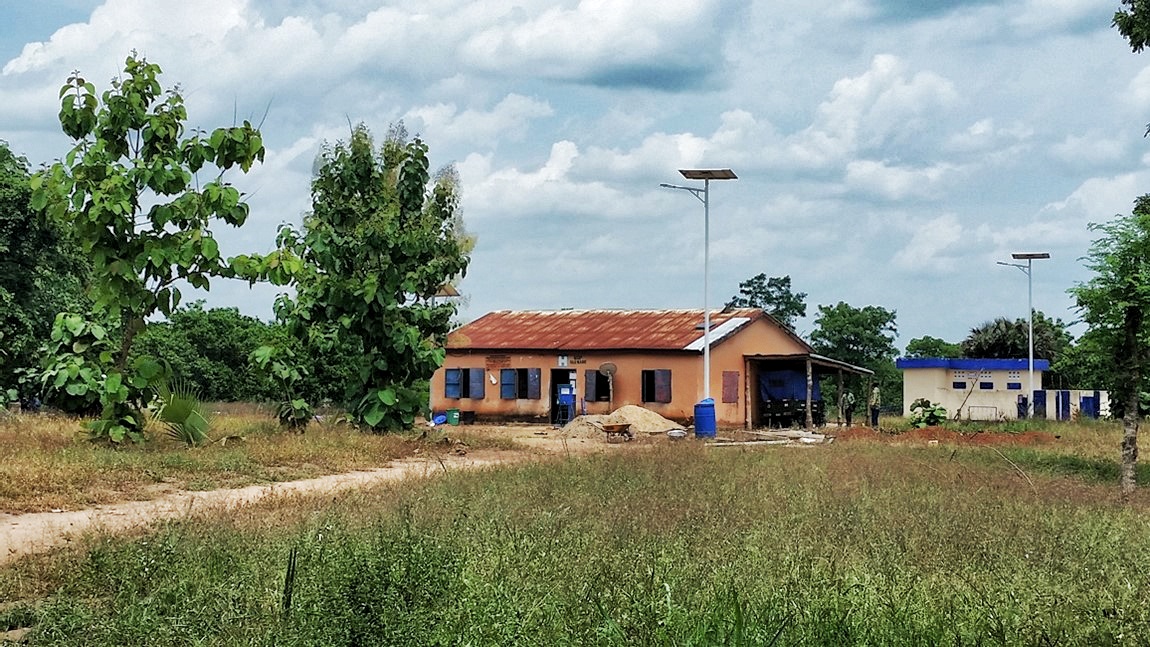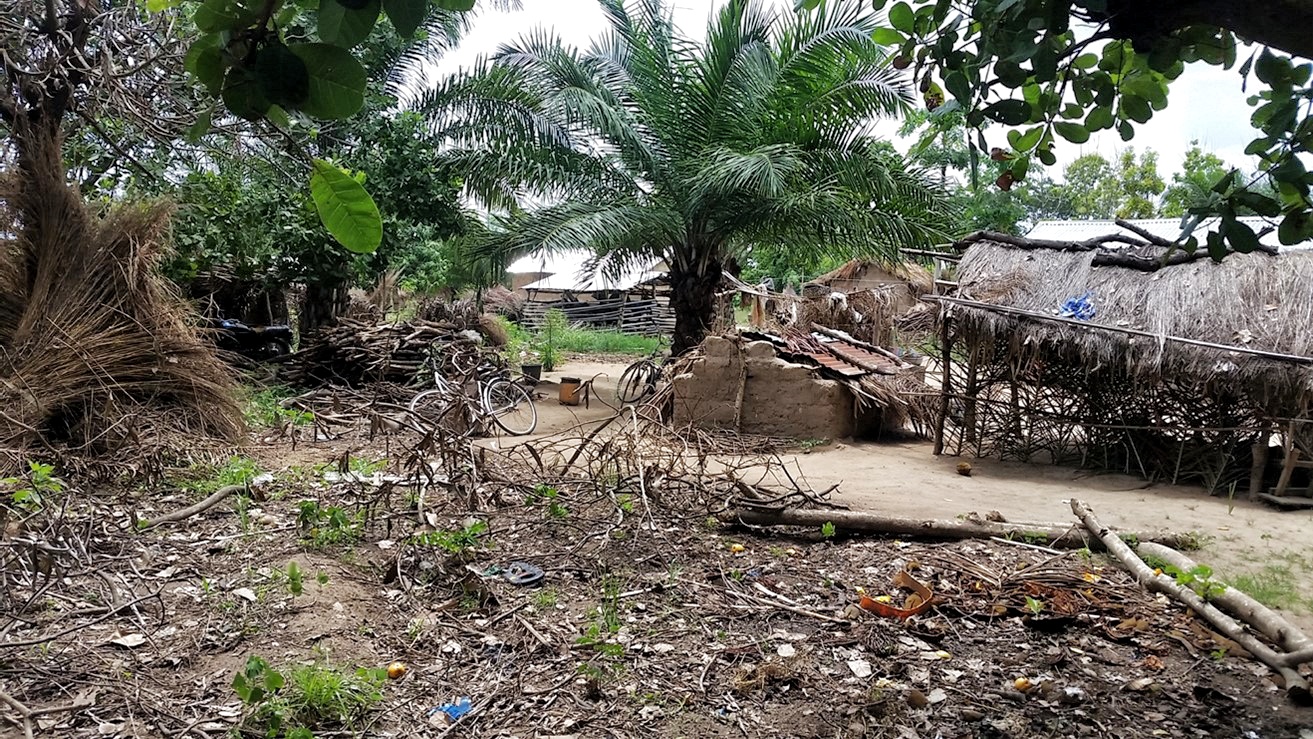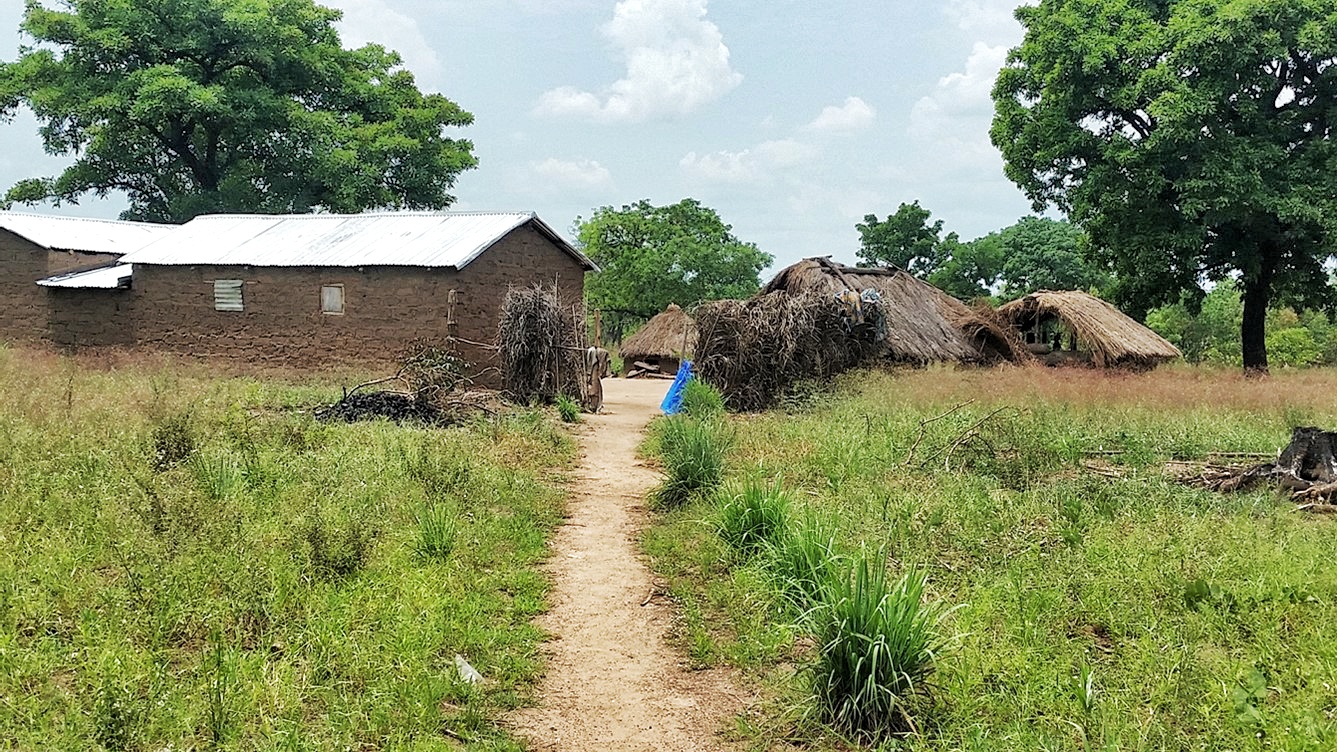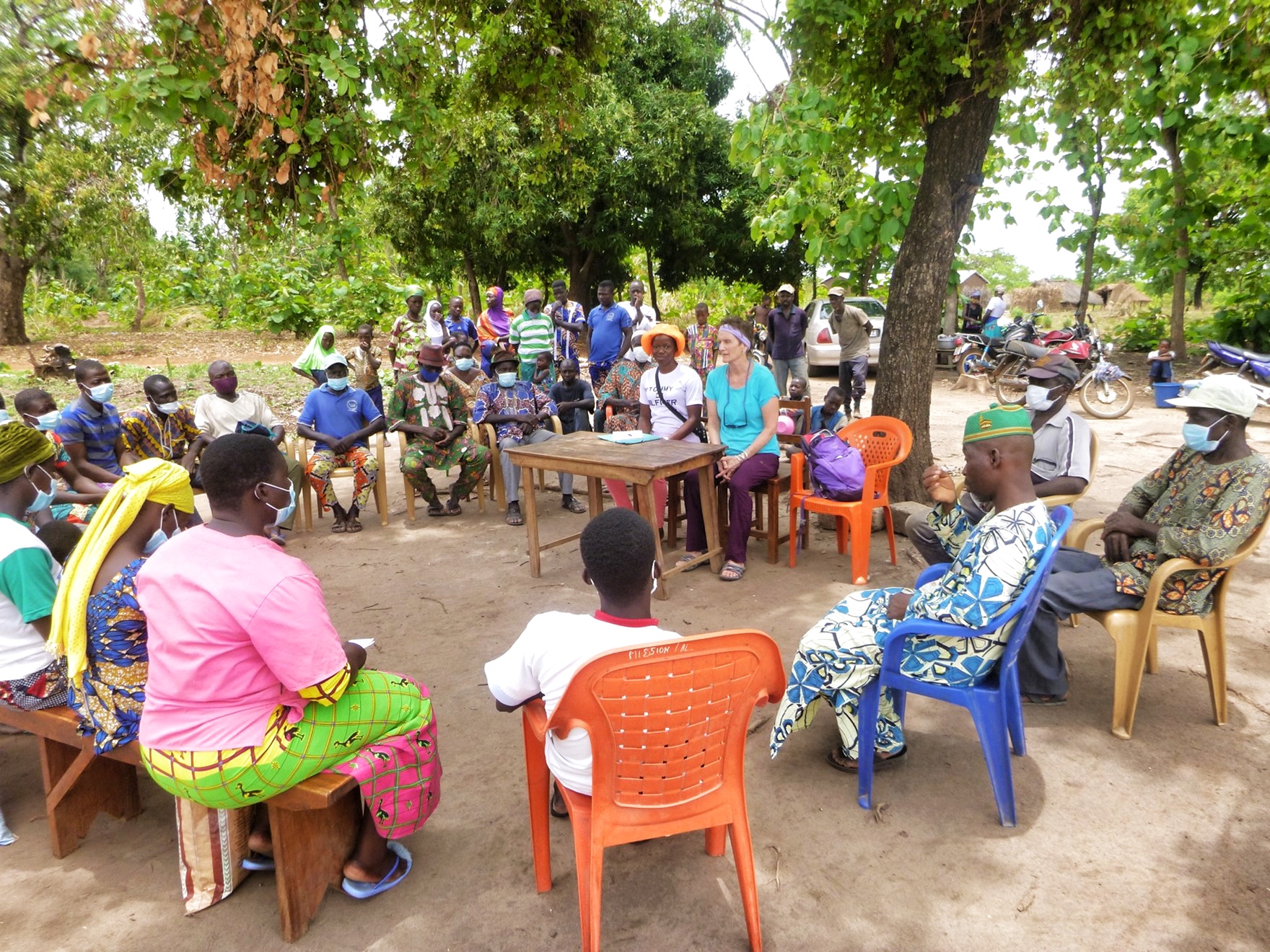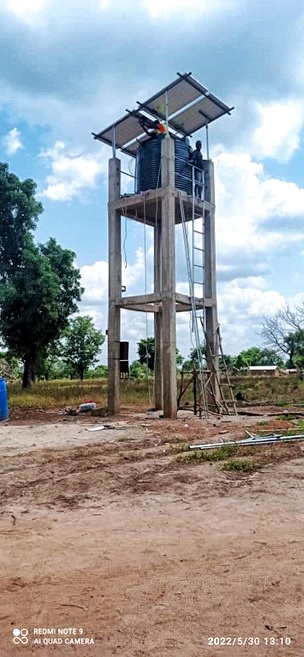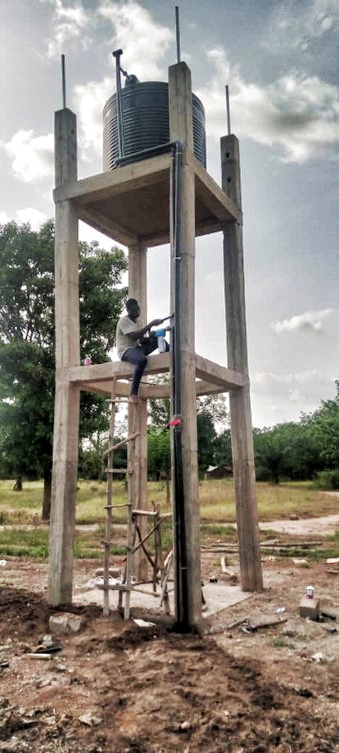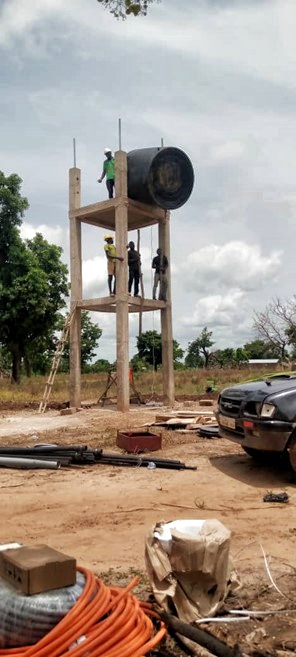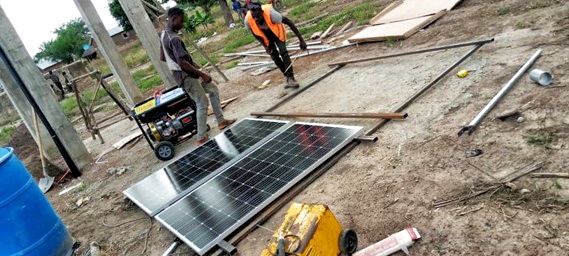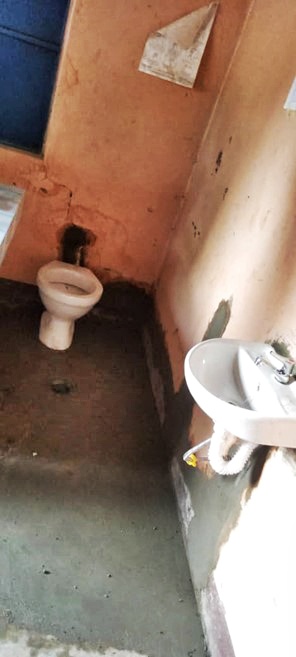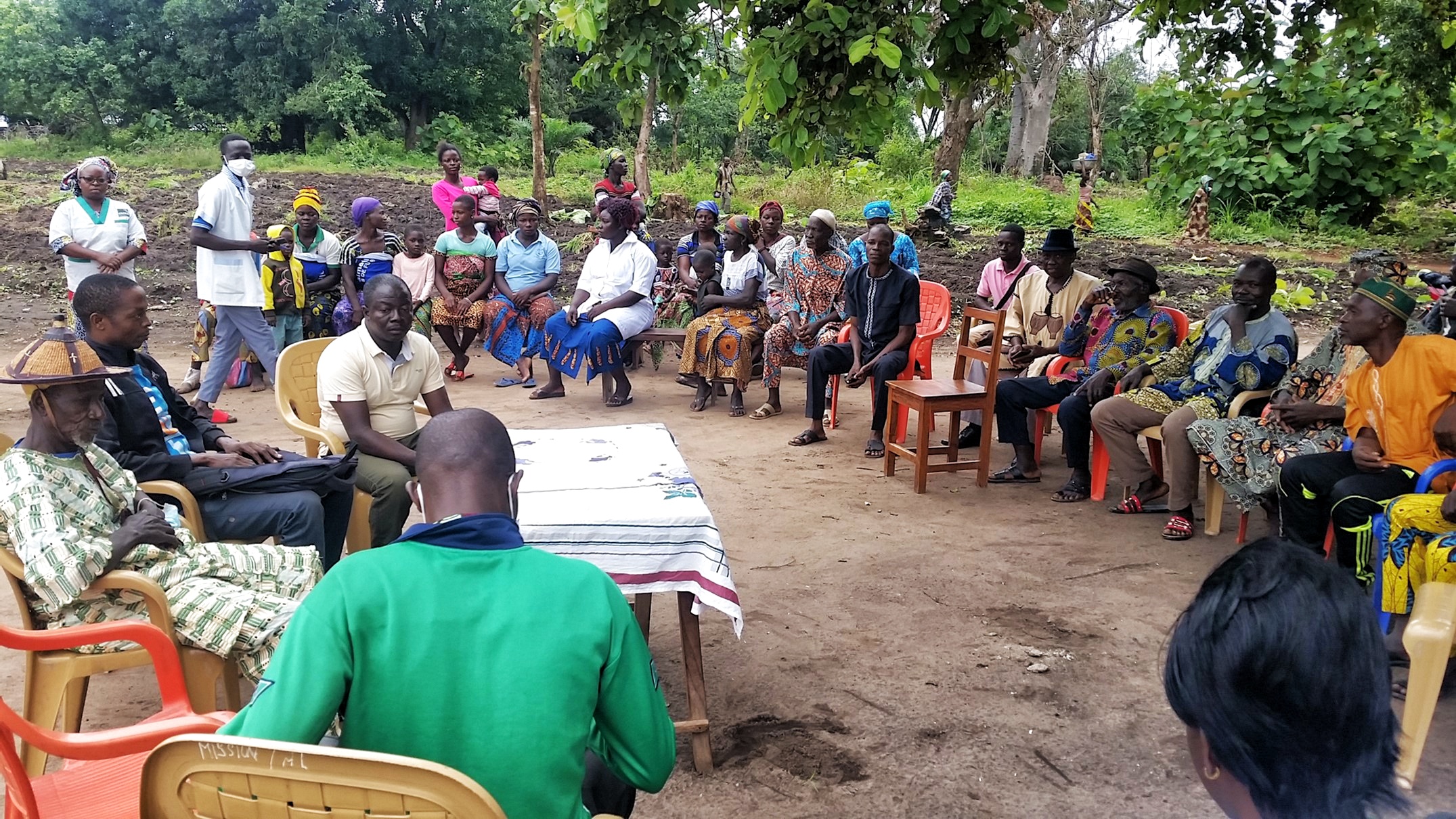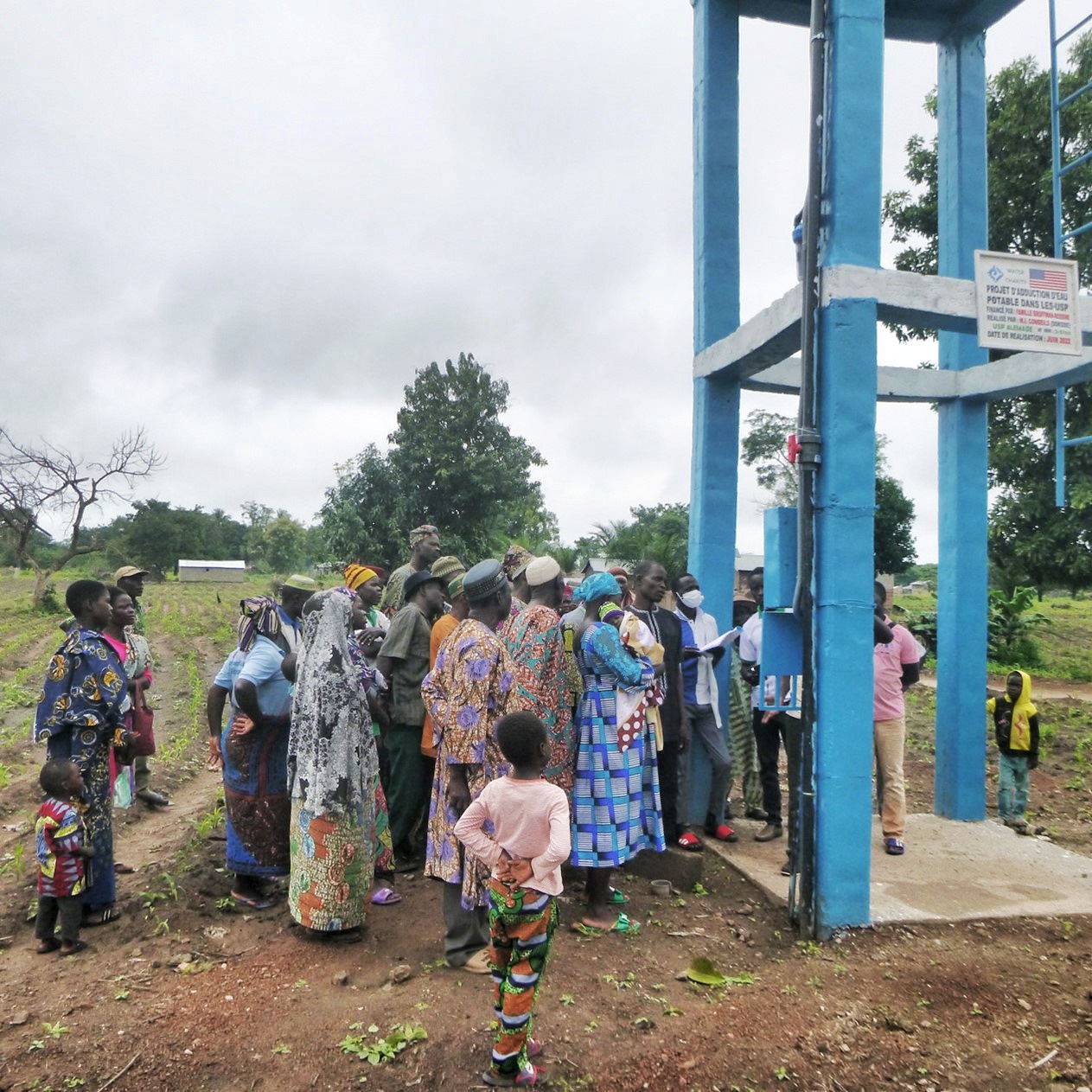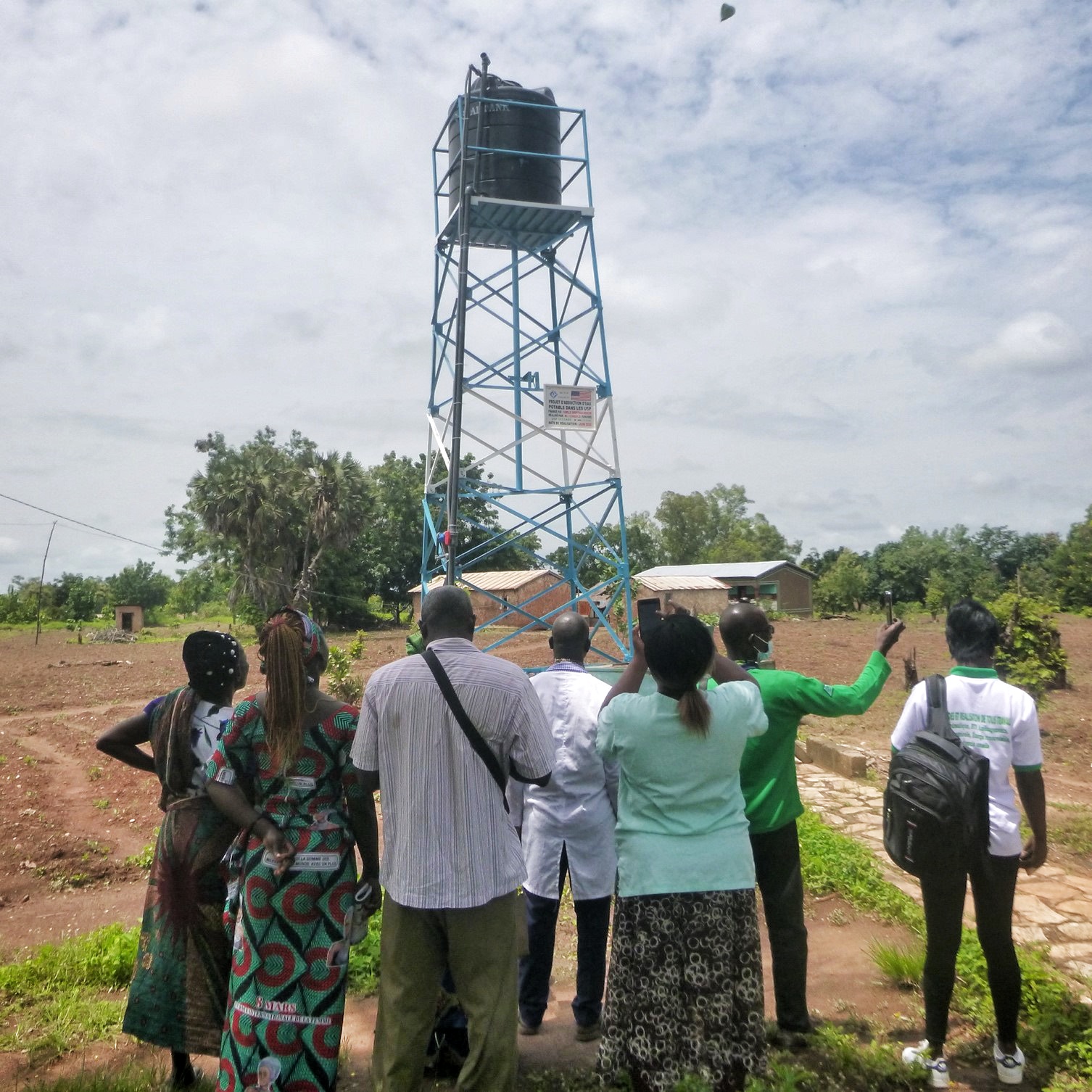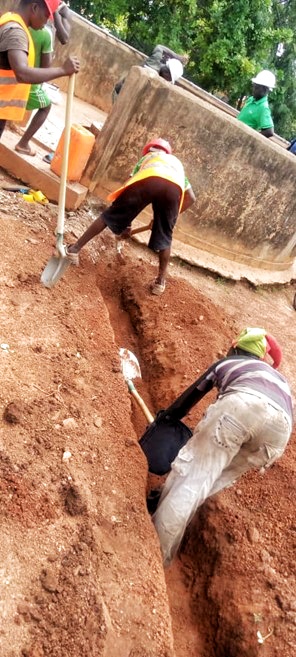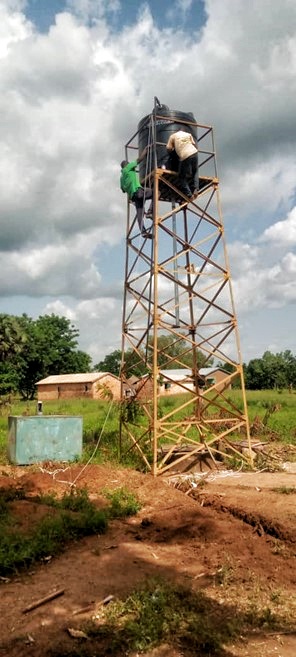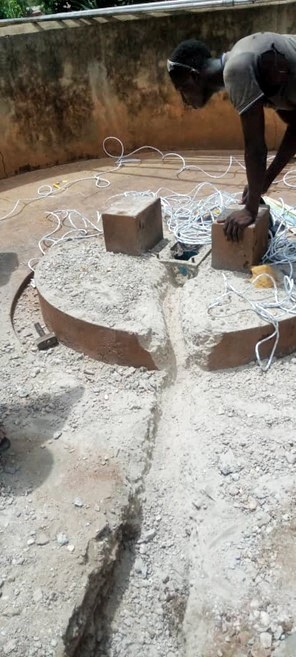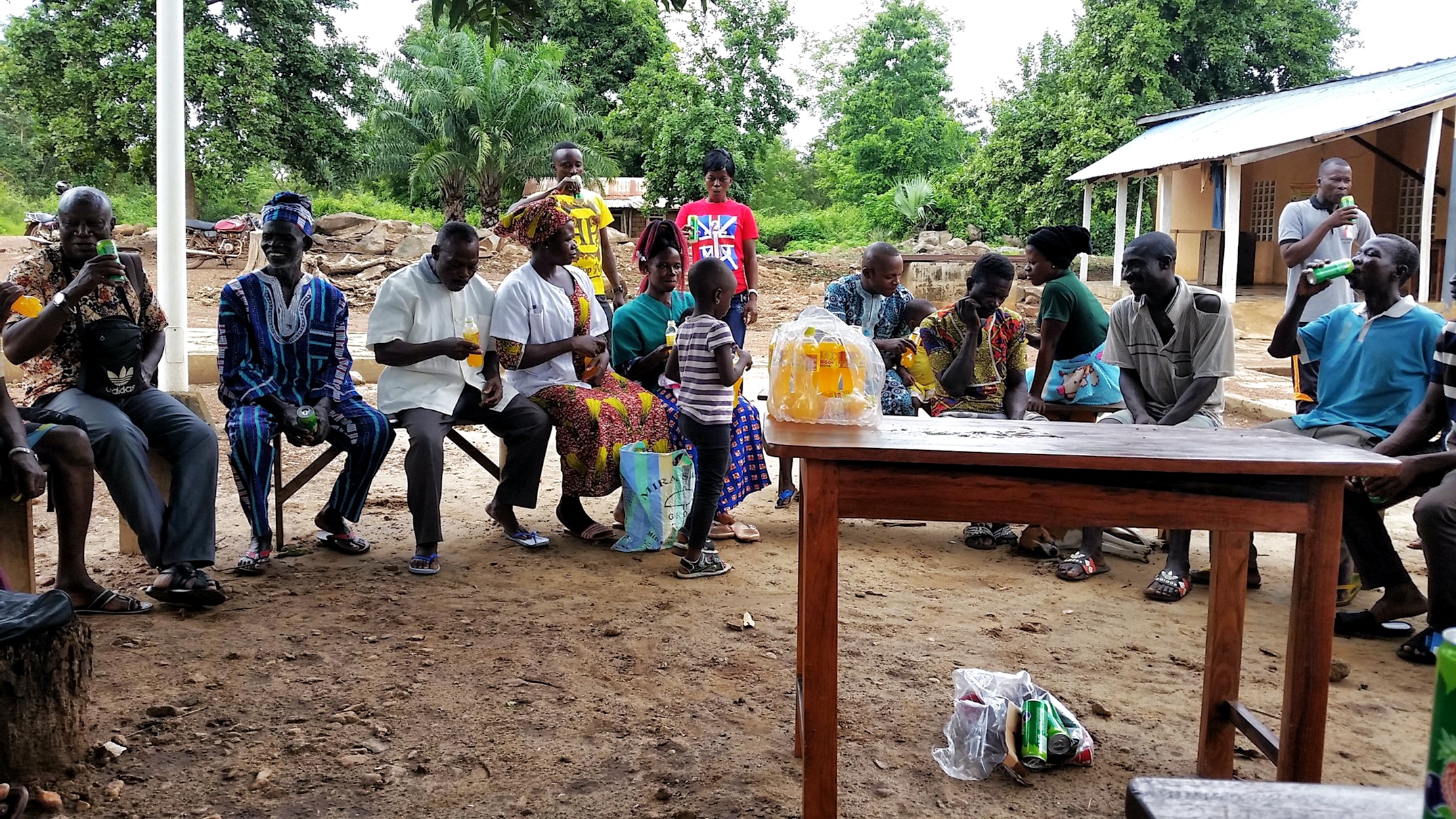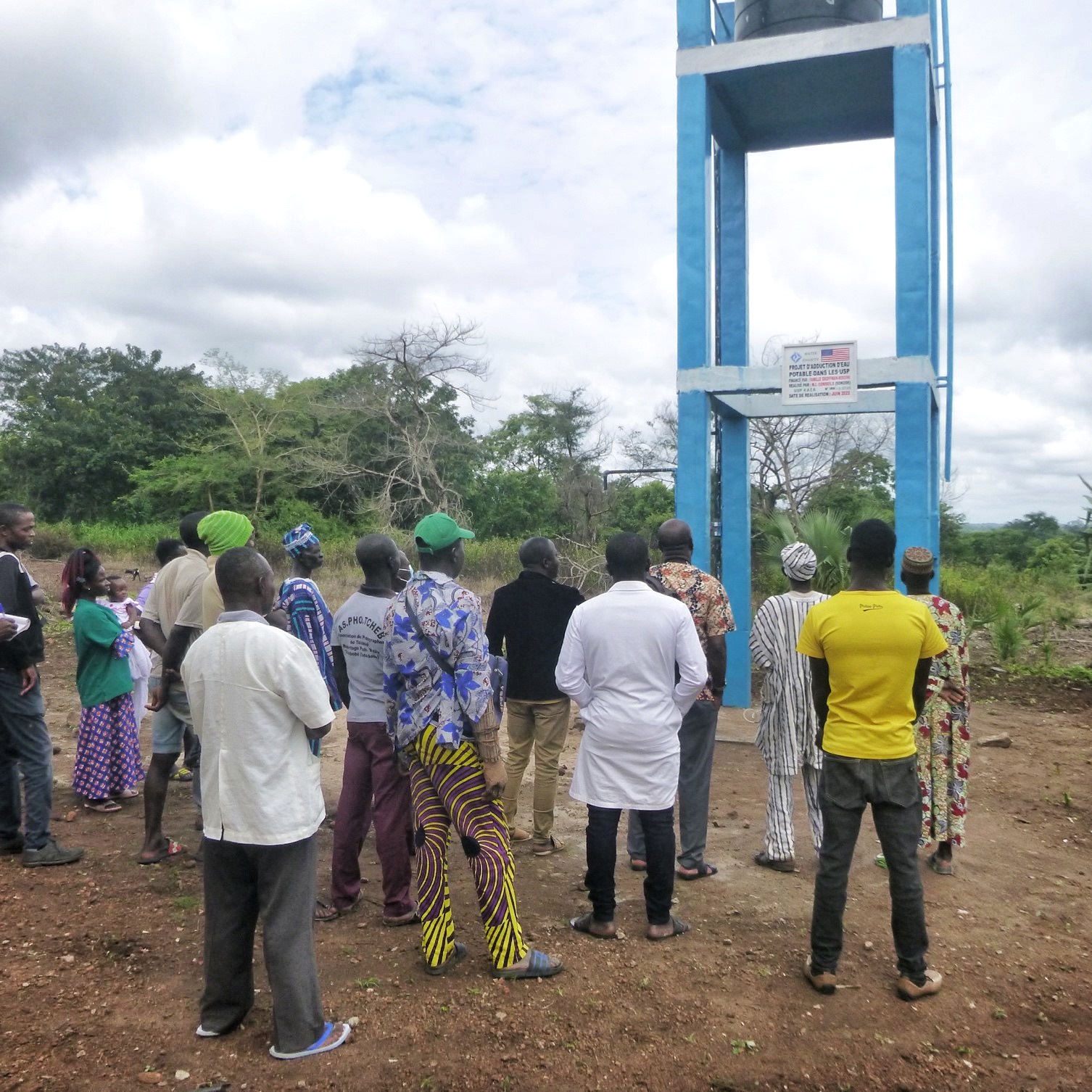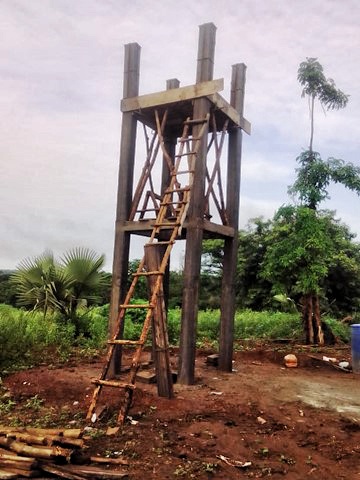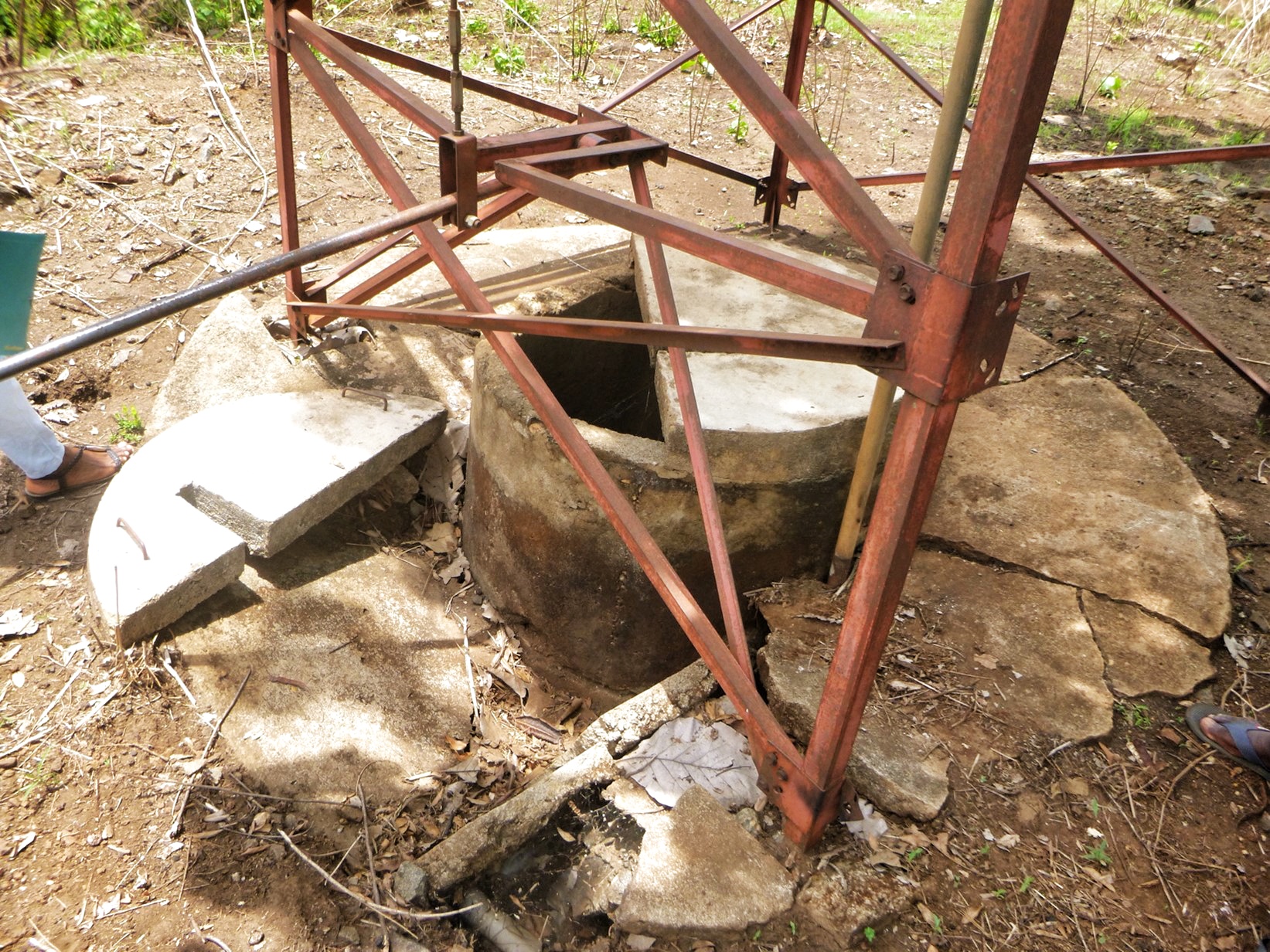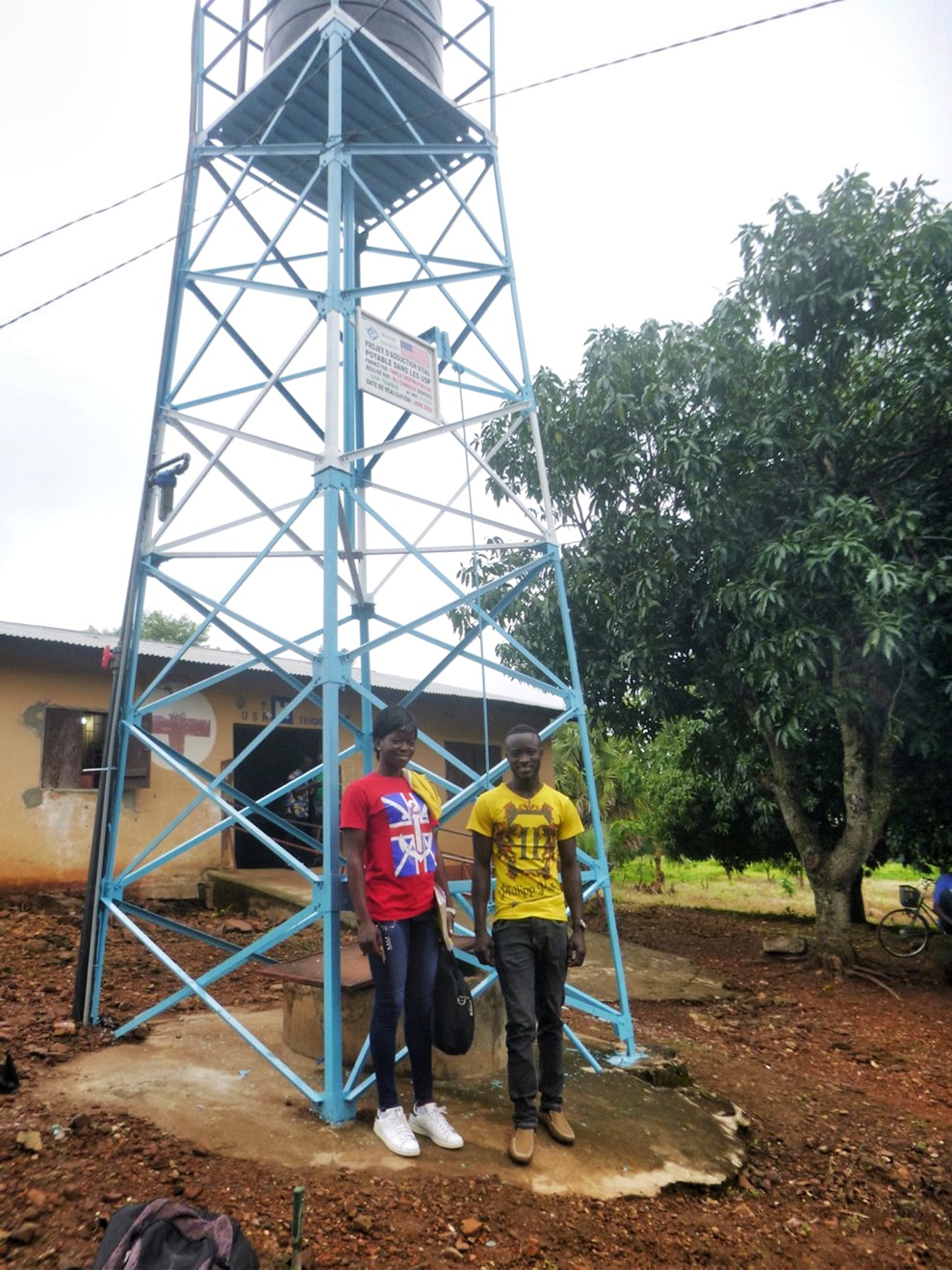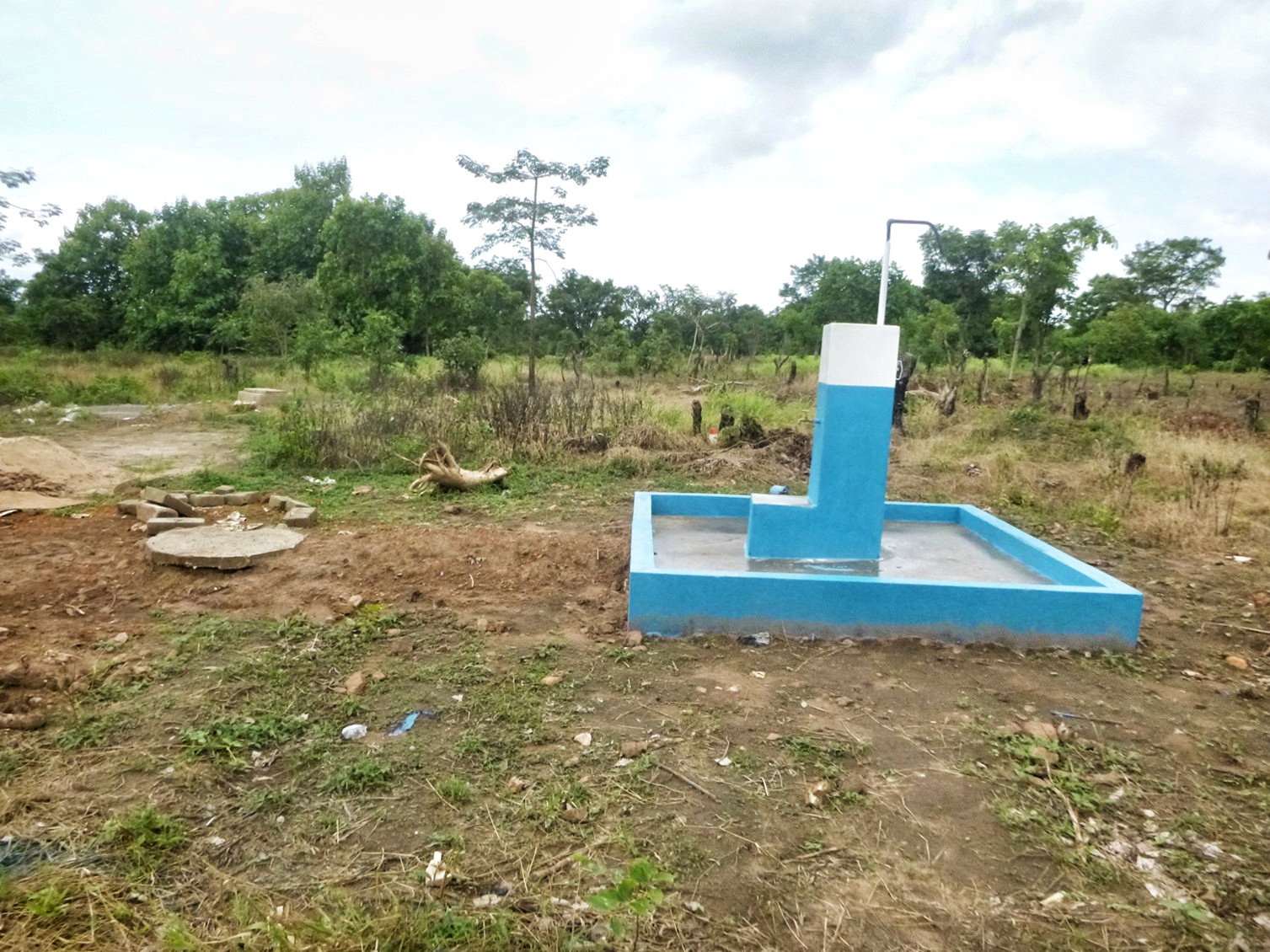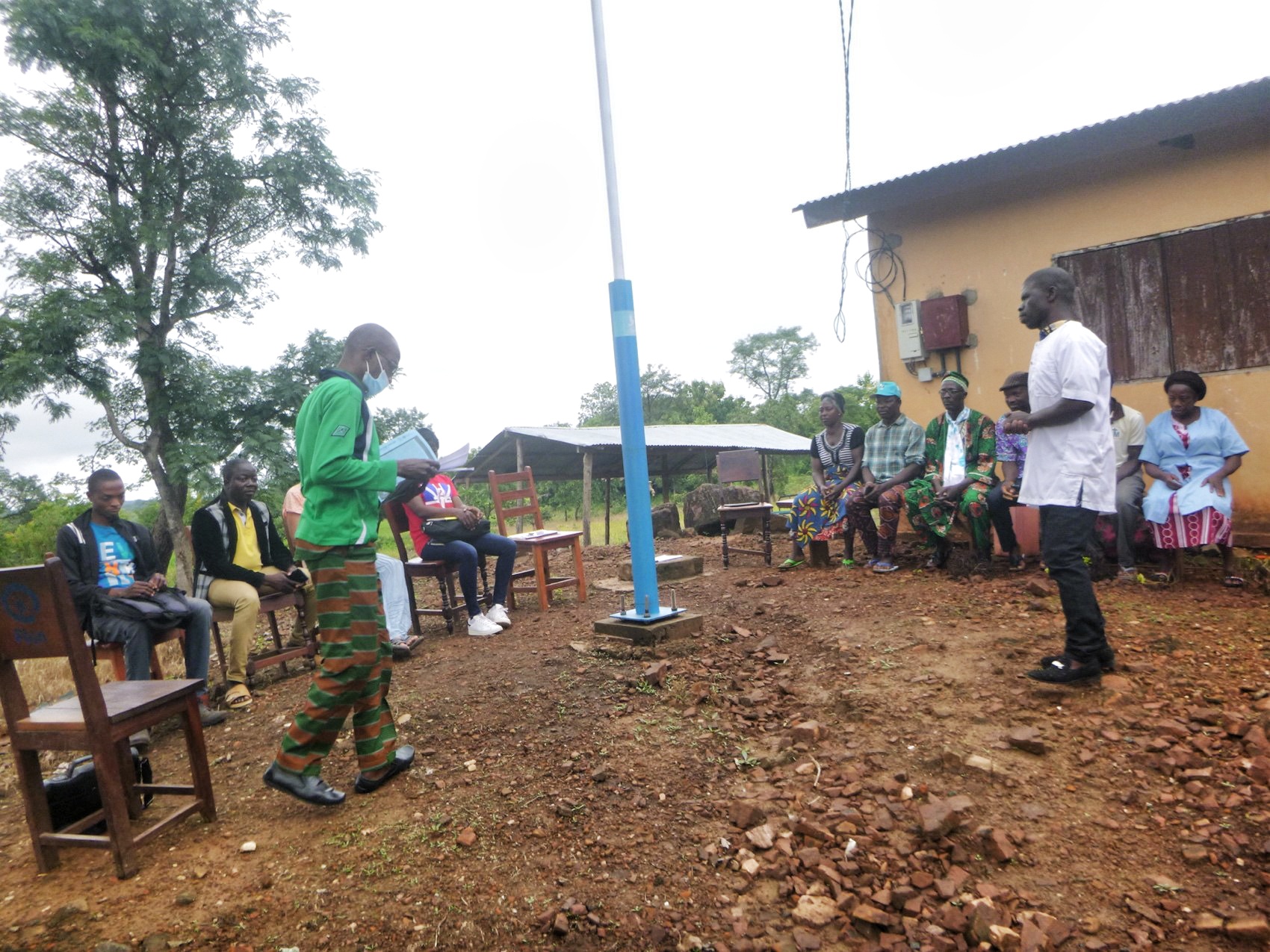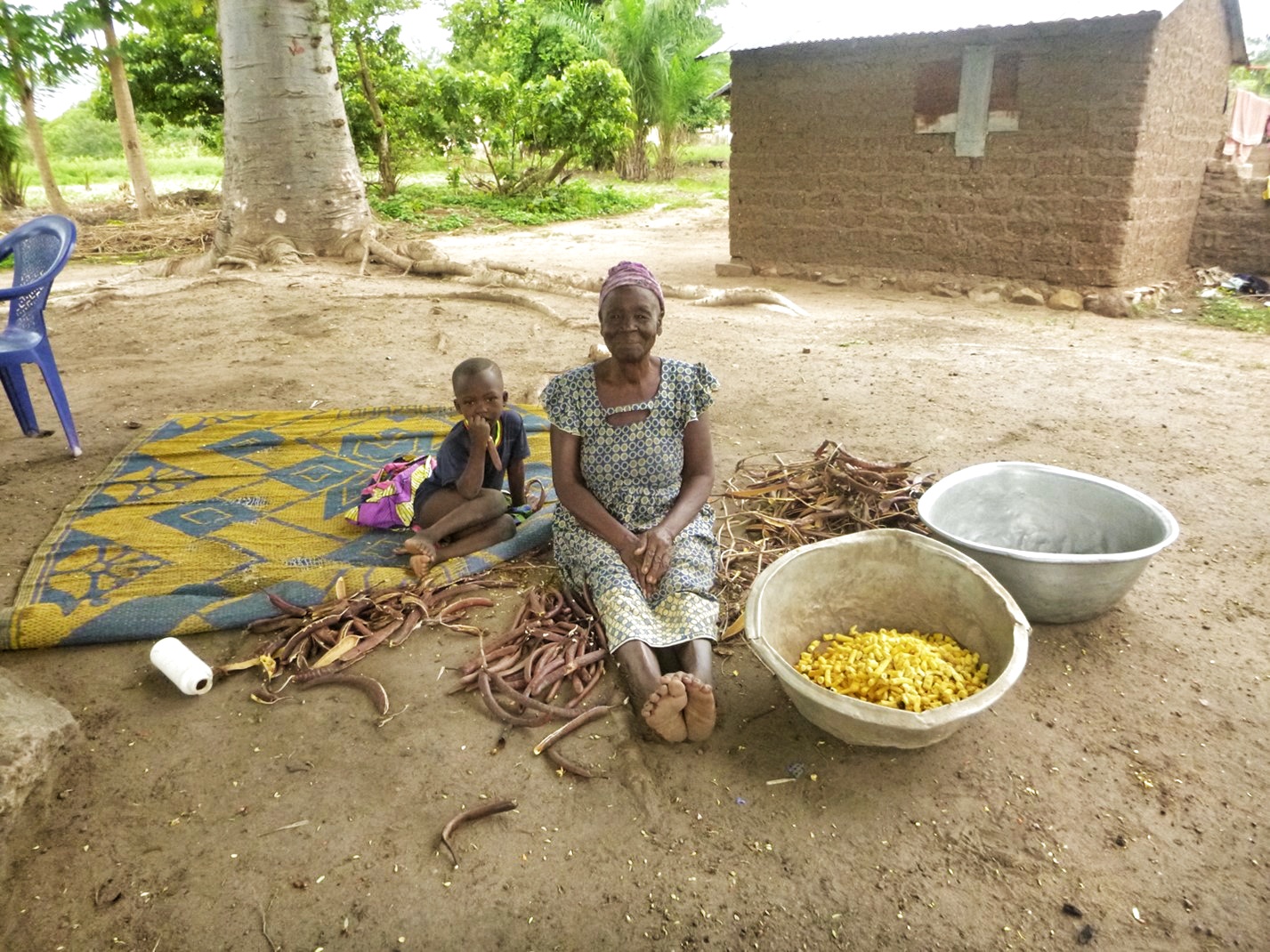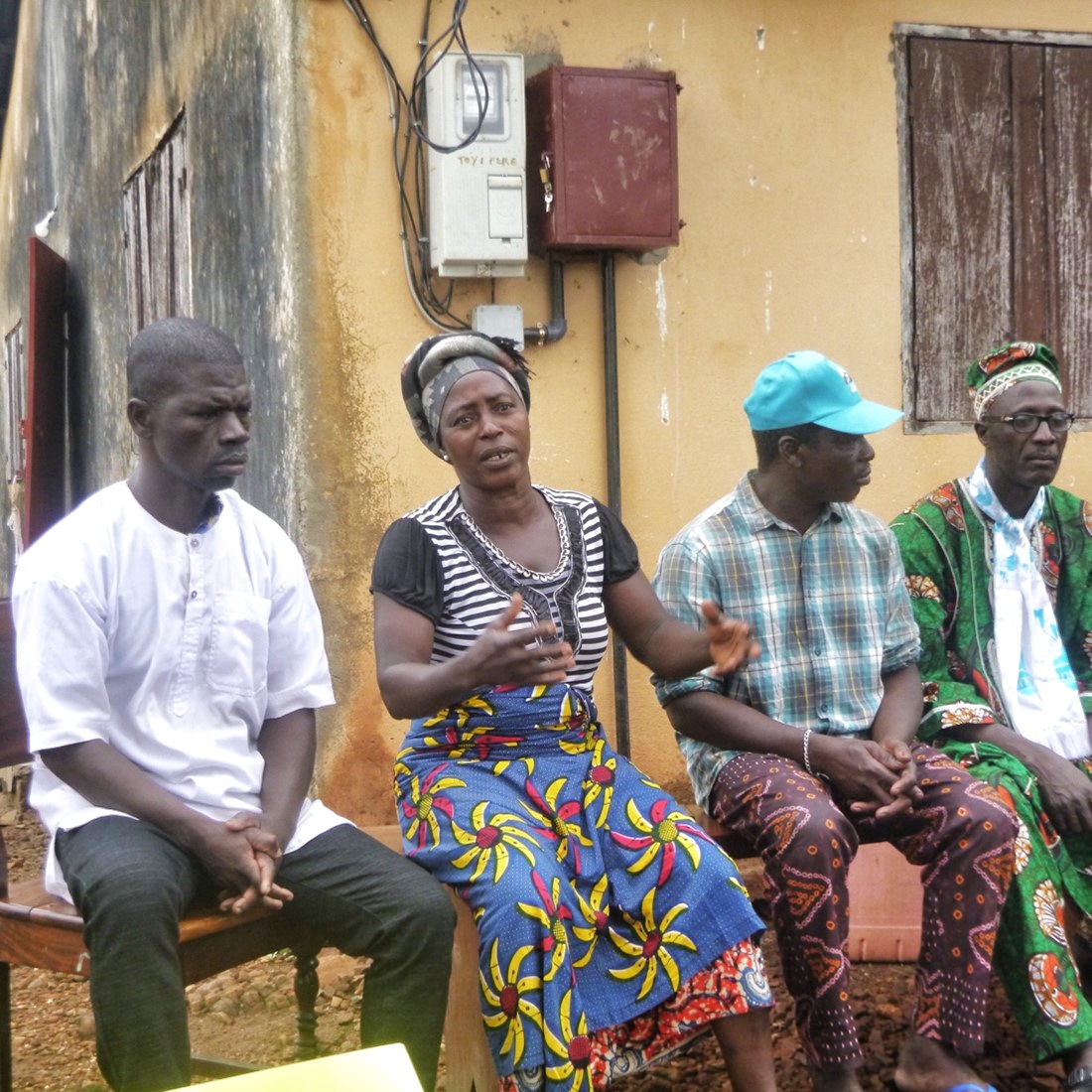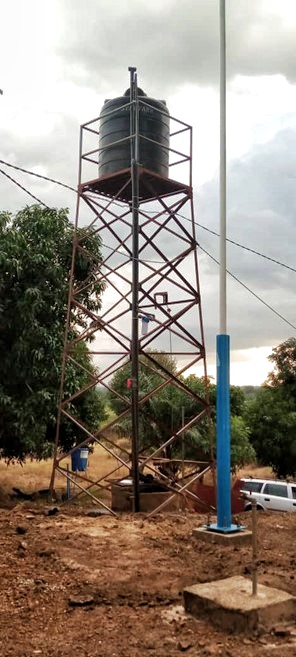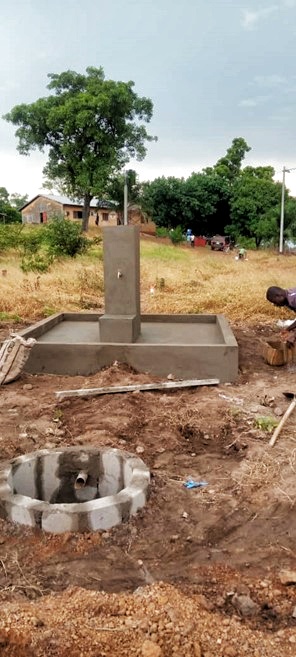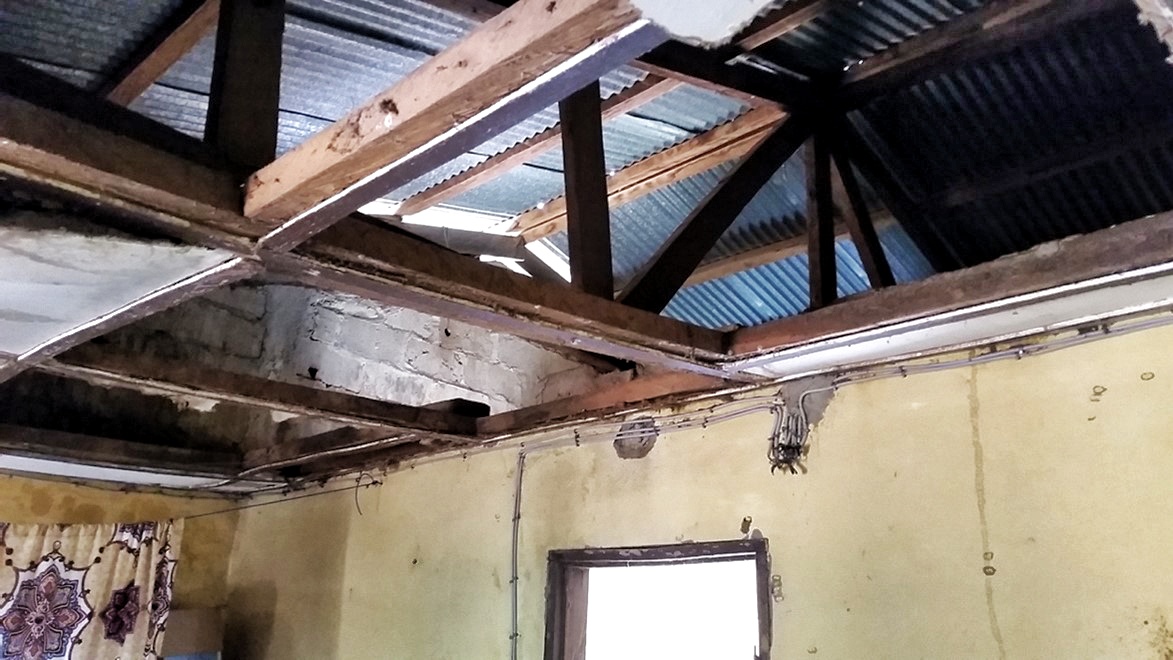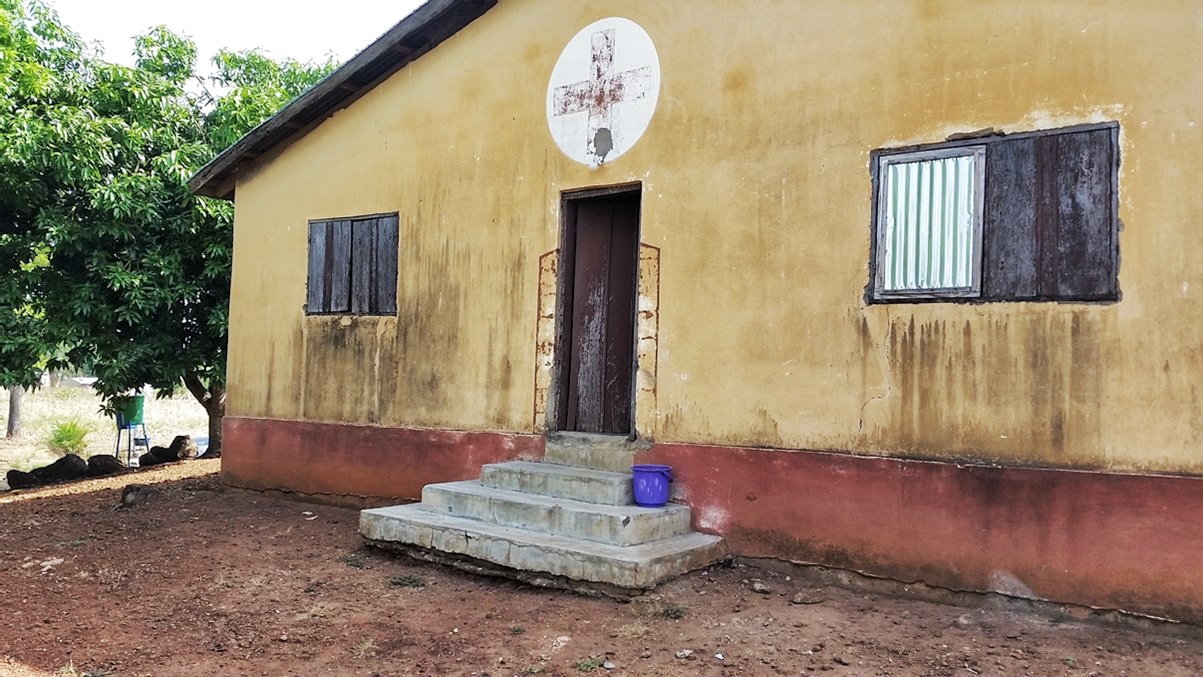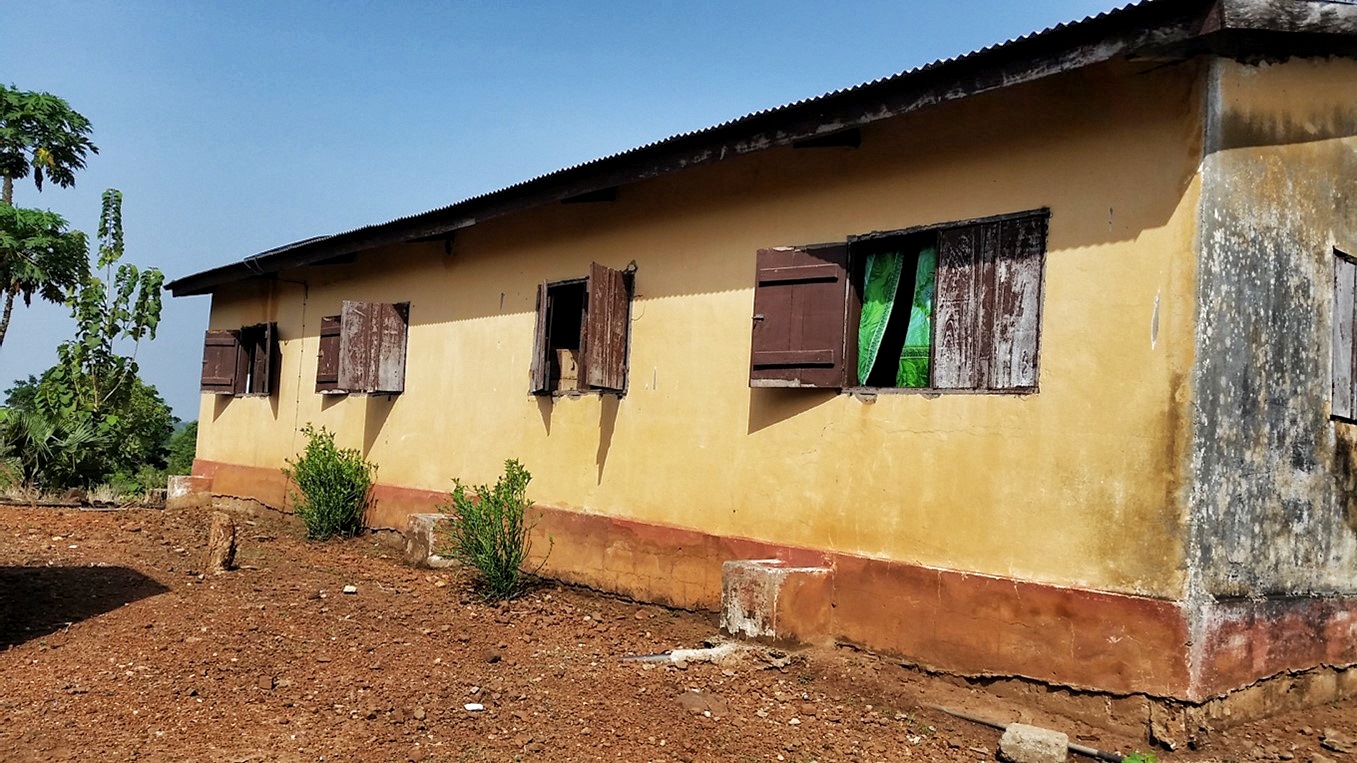April 30-July 8, 2022 : May 1 contract signed with the contracting firm, Multi-Inginéurs Conseils). The official opening was July 6-8. Due to a delay in receiving the funding for Round 3 (June 17) the team was occupied with starting the geophysics and drilling for Round 3 in addition to other non-WC work to which MCI was obliged. In addition, one of the clinics, Sessaro, whose center was recently electrified, was waiting for the power company to increase the wattage to accommodate the submersible pump and water distribution demands (rectified June 25). To read about the SUMMARY OF ROUND 1, CLICK HERE. This project has been finished.
SITE NAME OF RURAL CLINIC : Sotouboua Prefecture
To see related videos to this project. Click Here.
SOTOUBOUA , one of five prefectures (districts) in the Centrale Region, is situated south of Sokodé along the National Highway (the N1). A verdant region with good soil, abundant rain and dispersed subsistence farming communities (households living adjacent to their lands rather than congregated in the village center). The health centers (USP) are usually located outside of the village center hence limiting the number of households directly benefitting from the clinic well. The dominant ethnic group is the Kabye, originally from the Kara region to the north and after the political turmoil of 1992, were forced from Plateau Region to the south. Most are animists with some Christians and lesser Muslims however most appears to be a blend of animist-flavored Christianity. All of these sites are remote though several have been since serviced with electric power and let us not forget the cell towers which seem to have sprouted since 2018. So while there is little potable water, along with a plethora of other problems including the constant absence of pump repair, everyone has a phone and money for mobile data!! While the work follows the need outlined by the regional ministry of Health, most of the project sites were in fact not the list and those that were did not have potable water. The regional heads has been advised to update the list to conform to reality on the ground, for whoever follows Water Charity.
ALEMADE: PREFECTURE OF SOTOUBOUA
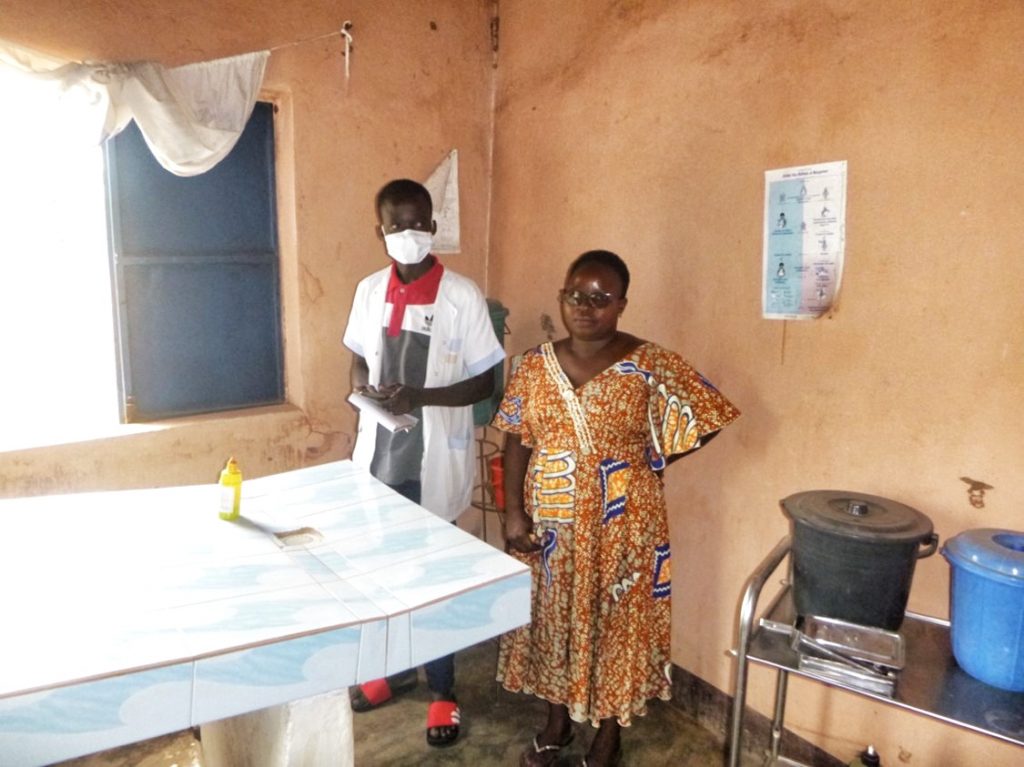
Clinic head (known as the “major”) and the midwife. This is a very small clinic compared to the others, without any indoor plumbing. No ceiling, just a metal roof. One step up from what is known as a health “hut” which is the lowest rung of community health care. Hence the reason for equipping this center with a solar system which normally would have been too expensive however a borehole well was drilled in 2015 by the government hydraulic department thus allowing the project to forego another borehole (see video of functioning borehole with manual pump)
Population of 3,000 with an additional 2,000 people living within the area serviced by the clinic. Mixed ethnic groups, muslims and animists. The clinic is very small, built-in 1999 without potable water. No ceiling, simply a metal roof and no prior plumbing. A borehole well was drilled in 2015 though most of the community water needs ae met at the nearby Mono river. Only two borehole wells exist in the village. Situated about 20 km from the district seat at Sessaro. No electricity in the village. Decided on a solar power system as a trial site given the remoteness of the village to access to generator parts and fuel. Village remote. We installed our first solar pump system as we did not have to drill a new borehole as the existing well produces a sufficient yield 0f 12,000 l/hr for both community use and the clinic. Manual pump was left in place to serve the community and a submersible pump added at depth for supplying water to the water tower for clinic and patient use.
Work accomplished: PUMP TEST AT EXISTING BOREHOLE WELL; CONSTRUCTION OF 6 m HIGH CEMENT BLOCK WATER TOWER AND 2,000 l POLYTANK; PLUMBING TO CLINIC; AFTERBIRTH DISCHARGE SYSTEM. NO POWER. INSTALLED SOLAR PANELS FOR PUMP.
Work Completed: May 09th, 2022
SESSARO: PREFECTURE (District) OF SOTOUBOUA
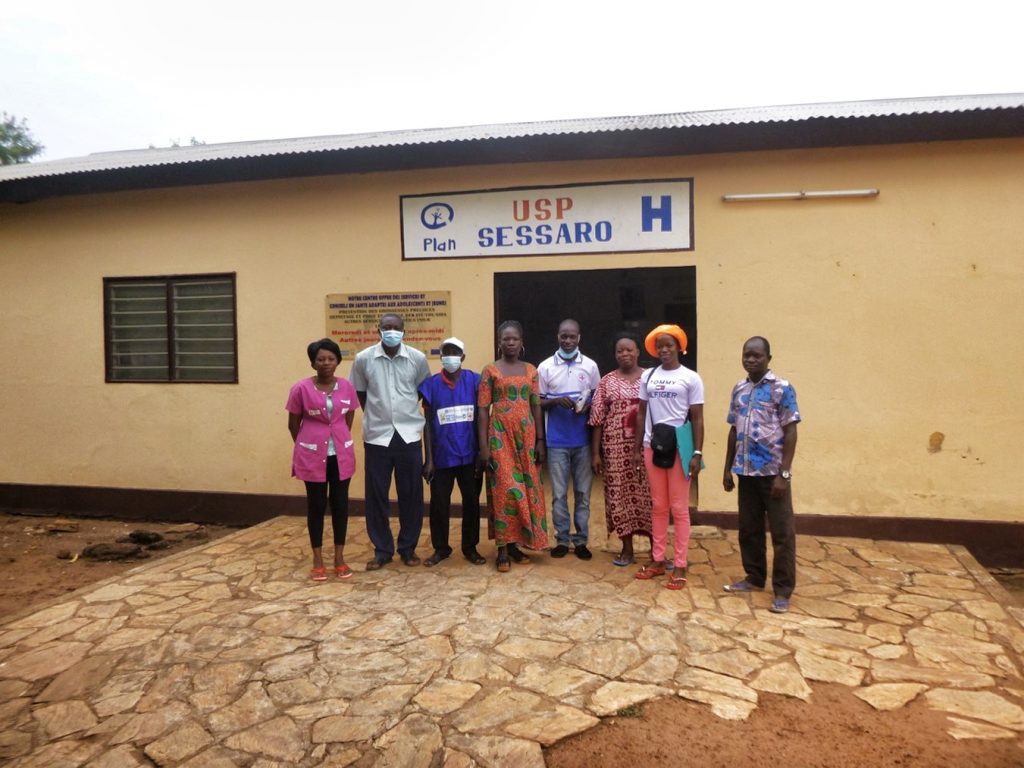
A district seat, Sessaro has a population of approximately 5,500, though the population served by the clinic is 12,500 comprised of (17) villages at a distance up to 5 km from the clinic. The USP clinic is the only official health center in Sessaro. The village is made up of mainly Kabye, Kotokoli, Lamba and Losso with the majority practicing animism and to a lesser extent, Islam. The clinic is situated in a less dense part of the village with roughly 60 neighboring households and a school nearby, both groups accessing the borehole clinic well which was drilled by the government hydraulic agency. Built-in 1998, a new maternity building was added in 2003 and later the clinic was renovated in 2021 with clinic funds, including housing for the head nurse and a covered waiting area for community vaccinations and meetings. Usually, the community is required to finance any repairs or renovations. However, at Sessaro, community participation has been negligible. There are only (4) borehole wells with manual pumps in the village (one nonfunctional). The other water sources are the typical shallow, nonpotable open wells found in many households and at community points. The clinic received electric power in 2016.
Work accomplished: PUMP TEST ON EXISTING BOREHOLE WELL; RETROFITTING WELL WITH A SUBMERSIBLE PUMP (LEAVING THE HAND PUMP IN PLACE FOR COMMUNITY ACCESS); REINFORCING THE EXISTING METAL WATER TOWER; PLUMBING FROM WATER TOWER TO THE CLINIC AND THE MATERNITY BUILDING. ELECTRICITY ON SITE.
Work Completed: May 07, 2022
KAZA Prefecture OF Sotouboua
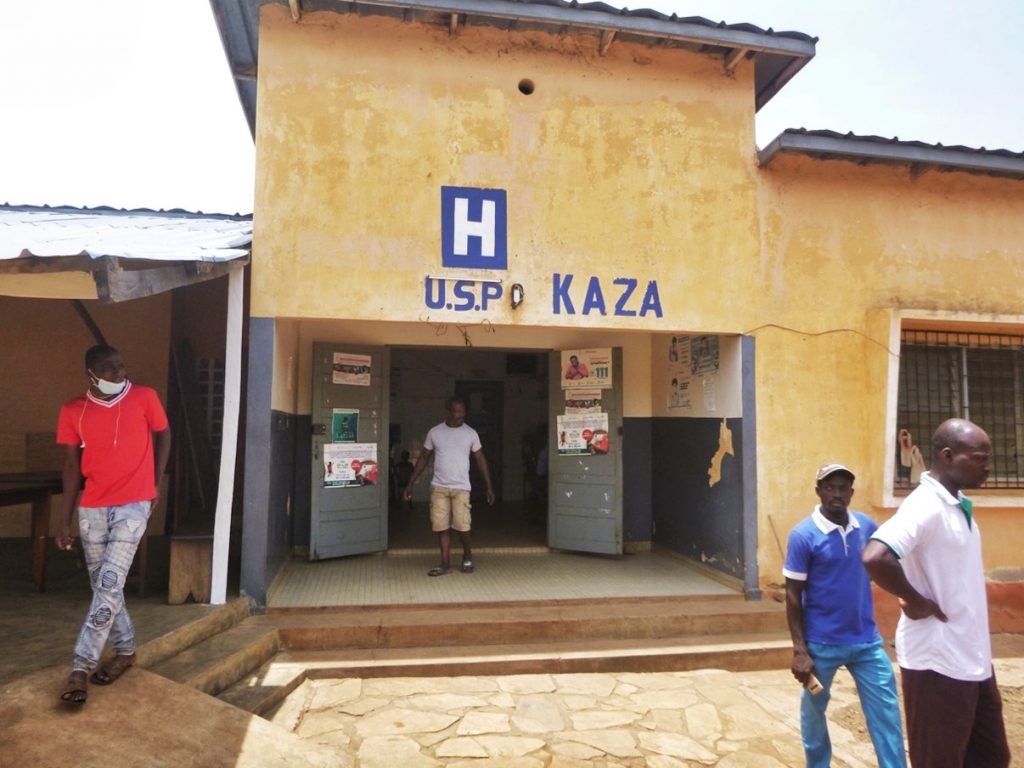
The clinic serves an outlying population of 6,000. Built in 1992 by the state, the water source was a rain-catchment cistern followed by an open well. A borehole well was drilled in 2005 and outfitted with a hand pump (intermittently operational). No electric power. A community of subsistence farmers, mainly Kabye, Kotokoli with seasonal Fulani. One of the more motivated communities insofar as providing the financial means to repair the building (2005), staff housing (2017 and currently a new storage room. This involvement indicates the community will most probably assist in maintaining the new well and water system in proper working order.
Work accomplished: PUMP TEST AT EXISTING BOREHOLE WELL; CONSTRUCTION OF 6 m HIGH CEMENT BLOCK WATER TOWER AND 2,000-liter POLYTANK; PLUMBING TO CLINIC; AFTERBIRTH DISCHARGE SYSTEM. NO POWER. PURCHASED GAS GENERATOR TO RUN PUMP.
Work Completed: May 07, 2022
TEMBIO CLINIC Prefecture OF Sotouboua

Built-in 1999 and scarcely touched since. The population of 3,500 and as with all of the villages save a few, the density of households near the clinic is sparse. Power in the village. Same water source as previously described. Predominantly animists. Subsistence cultivators. Probably the worst clinic insofar as the condition of the building. Rotting ceilings with bat poop and urine odors. Leaky metal roof, lacking screens on windows. Obviously little motivation on the part of the community at least since its construction in 1999, but a helluva high producing borehole (12,000 l/hr)! A meeting with the head Chief while full of promises for their share of labor, sand, and gravel, amounted to nothing.
Work accomplished: GEOPHYSICS; BOREHOLE DRILLING; 6 M WATER TOWER; PLUMBING TO CLINIC; ADDITIONAL COMMUNITY ACCESS WATER STATION NEAR BOREHOLE (due to the very high yield of 12,400 l/hr); AFTERBIRTH DISCHARGE SYSTEM; 3,000-liter POLYTANK. ELECTRICITY ON SITE.
Work Completed: May 06, 2022
ADDITIONAL WORK AT THREE FORMER CLINICS ( FROM THE 2018 PROGRAM) NEEDING ASSISTANCE. FINANCED WITH CARRY-OVER FROM ROUNDS 1 AND 2 (THANKS TO A BETTER THAN ESTIMATED CFA TO USD EXCHANGE RATE).
Solao
Finished in 2018 as part of the initial (15) rural community and clinic water projects. As part of a continuing follow-up, the clinic was visited 4/26/2022. Solao has made significant improvements since 2018, using its funds to repair doors and windows, patch and paint walls, new beds, and a new veranda. The diesel generators purchased in 2018 were of poor quality.
Solao was a worthy candidate to receive a new European-made generator in addition to borehole wellhead protection as the borehole well was inadequately sealed in 2018.
To see related videos, Click Here.
Kemeni
Finished in 2018 as part of the initial (15) rural community and clinic water projects. As part of a continuing follow-up, the clinic was visited on 4/11/2022. Visibly a problem with the borehole well as seen by the presence of red mud on the water tank and the head of the clinic describing sedimentation in tank (since 12/2019). As this appeared to be a problem with the borehole itself, the borehole was flushed on 6/4/2022. In addition, the water filter was moved to a lower position on the water tower for ease of access, and the borehole opening was properly closed and encased in a cement box (the latter not done in 2018 leading to debris inside the open borehole).
To see related videos, Click Here.
SAMAI
Finished in 2018 as part of the initial (15) rural community and clinic water projects. As part of a continuing follow-up, the clinic was visited on 4/28/2022. Samai clinic never received the benefit of an official closing as the Director of Hydraulics and Rural Water ( a government agency, part of the Ministry of Water) never visited the site nor was there any of the promised follow-up. As a result, Samai, the last clinic (and the most remote from Sokodé) was poorly completed. Problems with the indoor plumbing and the community participation was evident during the informal 2019 visit (not part of a funded program). The 2022 project rectified the (ancient) plumbing problems on 6/6/22 (which would have been a part of the overall water system work) by replacing corroded pipes and faucets, in addition to the same well-head protection as Solao and Kemeni clinics.
To see related videos, Click Here.
This project has been finished. To read about the conclusion of the project, CLICK HERE. To read about the beginning of the project, CLICK HERE.

